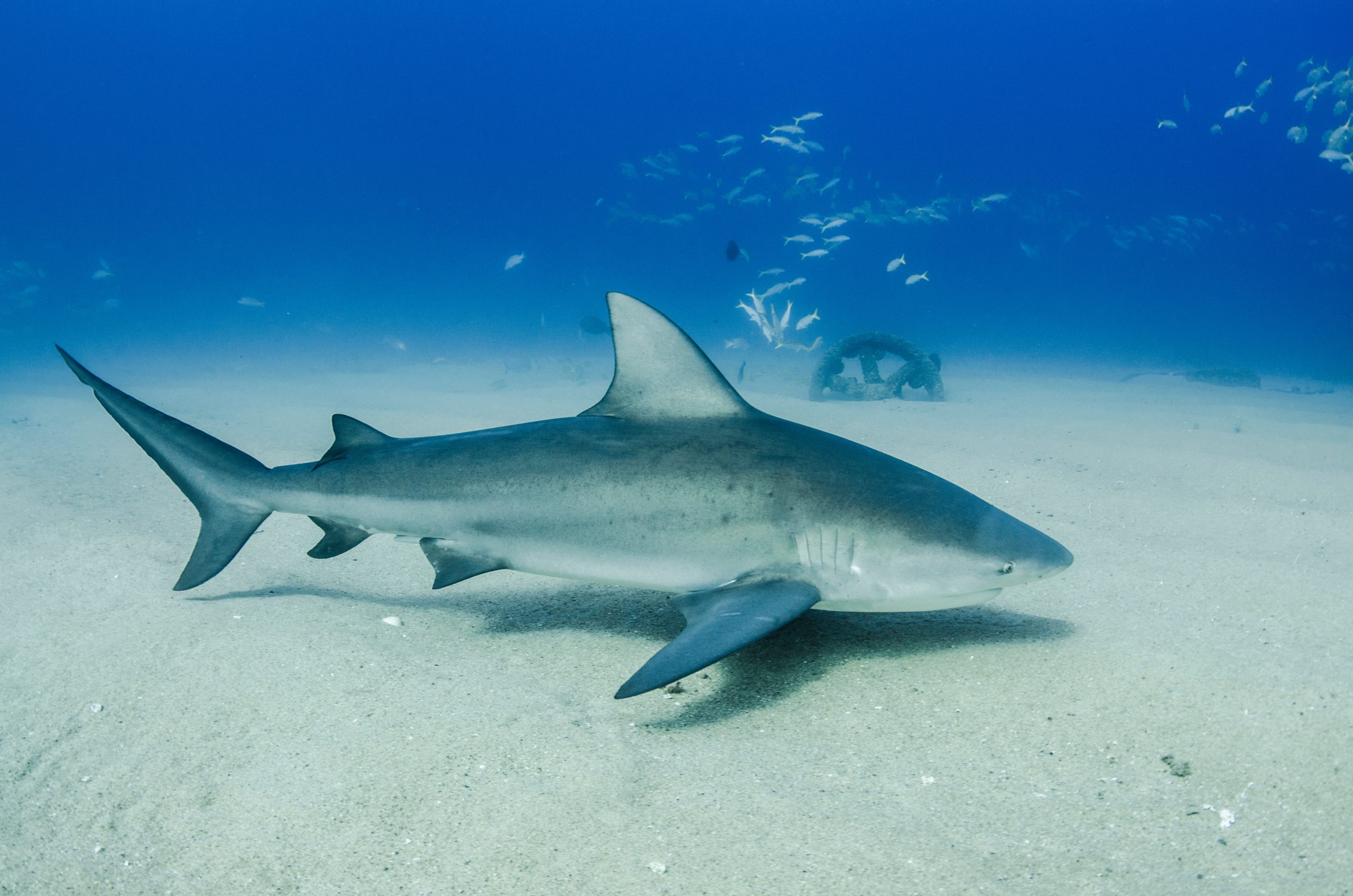10 Interesting Facts About Bull Sharks You Need to Learn

Bull sharks are among the most fascinating and misunderstood creatures of the deep. Known scientifically as Carcharhinus leucas, these resilient predators are notable for their unique ability to thrive in both saltwater and freshwater environments. This capability sets them apart from most other shark species and broadens their habitat range significantly.
Understanding bull sharks is crucial, not just because of their remarkable adaptability, but also due to their complex behaviours and vital role in marine ecosystems. This comprehensive guide delves into 10 intriguing facts about bull sharks, providing insights that highlight their significance and dispel common myths.
Join us as we explore the captivating world of bull sharks and deepen our appreciation for these incredible marine animals.
Fact 1: Unique Habitat
One of the most remarkable features of bull sharks is their ability to thrive in both saltwater and freshwater environments. This unique adaptation, known as osmoregulation, allows them to regulate their body’s salt balance, enabling them to move seamlessly between ocean waters and freshwater rivers and lakes.
For instance, bull sharks are commonly found along coastlines in warm waters and have been known to travel far up rivers such as the Mississippi in North America and the Amazon in South America.
Additionally, they inhabit various freshwater lakes, including Lake Nicaragua in Central America. This versatility in habitat not only showcases the bull shark’s extraordinary survival skills but also poses a fascinating subject for researchers and marine enthusiasts alike.
Fact 2: Aggressive Nature
Bull sharks have garnered a reputation as one of the most aggressive shark species, frequently cited in reports involving human encounters. This aggression is often attributed to their territorial nature and their preference for shallow coastal waters, where human activities are common.
Compared to other shark species such as the more reclusive great white shark or the typically deep-dwelling tiger shark, bull sharks are more likely to be encountered by humans due to their proximity to shorelines and river mouths. Additionally, their relatively high levels of testosterone further contribute to their aggressive behaviour.
While this fearsome reputation can be daunting, it is important to understand that bull sharks, like all wildlife, act primarily out of self-preservation and ecological necessity, not malice. Recognizing these behavioural patterns helps in fostering a balanced perspective on their nature and the critical role they play in marine environments.
Fact 3: Physical Characteristics
Bull sharks possess distinctive physical features that make them easily recognizable among shark species. They have a robust, stout body with a characteristic blunt, rounded snout, which gives them a formidable appearance. Their eyes are small, hinting at a lesser reliance on vision and a greater dependence on other senses for hunting and navigation.
Typically, bull sharks exhibit a greyish top side that blends into the ocean depths, and a white underside that camouflages with the lighter surface when viewed from below – a classic example of countershading.
In terms of size, adult bull sharks usually measure between 7 to 11.5 feet in length and can weigh between 200 to 500 pounds, although larger individuals have been recorded.
This powerful build, combined with their agile movements and strong swimming capabilities, marks the bull shark as a dominant predator in both marine and freshwater ecosystems.
Fact 4: Dietary Preferences
Bull sharks boast a diverse and versatile diet, reflecting their status as opportunistic feeders. These formidable predators primarily consume a variety of fish species, which constitute a significant portion of their diet.
However, their culinary preferences do not end there; bull sharks are known to prey on marine mammals, birds, turtles, and even other sharks, showcasing their adaptability and broad predatory skills. One of the most fascinating aspects of their hunting techniques is their ability to take advantage of both ambush and active hunting strategies.
In murky waters where visibility is low, bull sharks utilize their heightened senses of electroreception and smell to detect prey, often striking with remarkable speed and precision.
Additionally, they have been observed employing complex maneuvers to herd and corral schools of fish, maximizing their hunting efficiency. These behaviors illustrate not only their dietary versatility but also their keen intelligence and adaptability in various environments.
Fact 5: Reproduction
Bull sharks have fascinating reproductive habits that ensure the survival of their species. These sharks are viviparous, meaning they give birth to live young rather than laying eggs.
The gestation period for bull sharks typically lasts about 10 to 11 months, during which time the developing embryos receive nourishment through a yolk sac placenta. A female bull shark can give birth to a litter of 1 to 13 pups, though the average number is about 4 to 10.
The newborn sharks, known as pups, measure around 2 to 3 feet in length at birth, already equipped with the capabilities to fend for themselves in the wild.
This mode of reproduction, combined with the extended gestation period, aligns with their strategy of producing relatively fewer offspring compared to other fish species, but investing more in the survival and development of each one.
The birth usually occurs in estuarine habitats or shallow coastal waters, providing a safer environment away from the higher predation risks found in deeper waters. Understanding these reproductive strategies offers critical insights into bull shark population dynamics and is essential for their conservation and management.
Fact 6: Speed and Agility
Bull sharks are renowned for their impressive speed and agility, traits that significantly enhance their capabilities as top predators. They can reach swimming speeds of up to 25 miles per hour (40 kilometres per hour), thanks to their powerful, muscular build and streamlined bodies. This remarkable speed enables them to chase down a wide variety of prey with great efficiency.
Additionally, their agility allows them to execute swift, sharp turns and complex maneuvers in pursuit of evasive targets. These physical attributes are crucial for their survival, particularly in the murky waters and estuarine environments they often inhabit, where quick responses to both prey and potential threats are essential.
The combination of speed and agility not only enhances their hunting success but also aids in avoiding larger predators and navigating the dynamic and sometimes treacherous habitats they call home.
Fact 7: Lifespan and Growth
Bull sharks exhibit a fascinating growth trajectory and have an average lifespan that reflects their adaptability and resilience in diverse aquatic environments.
Typically, bull sharks live between 12 to 16 years in the wild, although some individuals have been known to reach up to 25 years under optimal conditions. Their growth is marked by distinct stages, beginning with the pup stage. At birth, bull shark pups are usually 2 to 3 feet in length, already well-equipped to navigate their surroundings and evade predators.
As they grow, they transition into the juvenile stage, during which they experience rapid growth and development, often doubling their size within the first few years. This stage is crucial for their survival, as it prepares them for the challenges of adulthood.
Upon reaching maturity, which occurs around 8 to 10 years of age for females and slightly earlier for males, they continue to grow, albeit at a slower rate, reaching their maximum size and establishing their position as dominant predators in their habitats.
This gradual and steady growth, coupled with their relatively long lifespan, underscores the bull shark’s ability to thrive in both marine and freshwater ecosystems, adapting seamlessly to various environmental conditions.
Fact 8: Interaction with Humans
Bull sharks have a complex history of interactions with humans, which spans both historical accounts and contemporary encounters. Historically, bull sharks have been observed in coastal areas and estuaries, often bringing them into close contact with human activities such as fishing, swimming, and boating.
These encounters have frequently led to misunderstandings and a reputation for aggression, partly due to their presence in shallow waters where humans are more likely to be found. In contemporary times, these interactions have continued, with notable incidents often making headlines.
For instance, bull sharks are responsible for a significant number of recorded shark attacks on humans, primarily because they inhabit waters that overlap with popular recreational zones.
Noteworthy encounters include those that have led to increased research and understanding of their behavior, such as the famous case of the Jersey Shore attacks in 1916, which dramatically raised public awareness about shark behavior.
Despite their fearsome reputation, it is essential to recognize that bull sharks do not specifically target humans, and many interactions result from mistaken identity or curiosity. Understanding these interactions aids in developing effective strategies for promoting coexistence and ensuring the safety of both humans and these fascinating creatures.
Fact 9: Conservation Status
Bull sharks are currently listed as Near Threatened on the International Union for Conservation of Nature (IUCN) Red List, highlighting the growing concerns over their population decline. These resilient predators face several significant threats, primarily stemming from human activities.
Overfishing is a major issue, both as targeted catch and as bycatch in commercial fisheries, which greatly diminishes their numbers.
Additionally, habitat degradation, particularly in coastal and estuarine areas, poses a substantial risk to their survival. Pollution, including chemicals and plastics, further exacerbates these challenges by contaminating their habitats and food sources. Fortunately, various initiatives and efforts are in place to protect bull sharks.
Conservation organizations are advocating for stricter fishing regulations and the establishment of marine protected areas to safeguard crucial habitats. Educational programs aimed at raising public awareness about the ecological importance of bull sharks also play a vital role in their protection.
Through these measures, it is hoped that bull shark populations will be given a chance to recover and thrive, ensuring that these magnificent creatures continue to play their essential role in marine ecosystems.
Fact 10: Misconceptions and Myths
Bull sharks are often surrounded by a cloud of myths and misconceptions that paint an inaccurate picture of these remarkable creatures. One common myth is that bull sharks are inherently aggressive toward humans and are prone to attacking without provocation.
This misconception is fueled by their frequent presence in shallow coastal waters, where encounters with humans are more common, but the reality is that bull sharks do not specifically target humans; most attacks are cases of mistaken identity or curiosity.
Another prevalent myth is the belief that bull sharks are purely marine animals, confined strictly to saltwater environments. In truth, bull sharks are highly adaptable and can thrive in both freshwater and saltwater habitats, regularly venturing into rivers and estuaries.
Dispelling these myths is crucial for fostering a more accurate understanding of bull sharks and promoting coexistence between humans and these vital marine predators.
Conclusion
In conclusion, bull sharks are undoubtedly one of the most intriguing and misunderstood predators in our oceans. We have explored their remarkable adaptability to both saltwater and freshwater environments, their unique hunting strategies, and the distinct growth stages that highlight their resilience.
Additionally, their complex interactions with humans, as well as the myths and misconceptions that often surround them, have provided a deeper insight into their true nature.
Understanding the challenges they face, from overfishing to habitat degradation, underscores the urgent need for conservation efforts to ensure their survival.
As we continue to learn more about these fascinating creatures, it’s crucial to spread awareness and contribute to initiatives aimed at protecting their populations. By appreciating the ecological significance of bull sharks, we can foster a more harmonious coexistence and help secure a future where they can thrive.
Let this knowledge inspire you to delve deeper into the world of marine conservation and play an active role in preserving the biodiversity of our planet.




